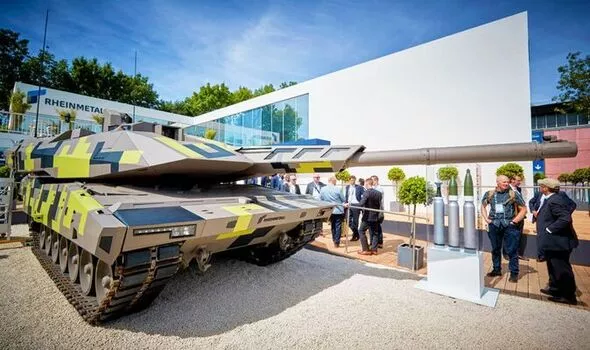You’ve probably seen the word “Panzher” in an online game, a history forum, or maybe even a casual conversation. At first glance, it might look unfamiliar. The truth is, “Panzher” is almost certainly a common misspelling or phonetic rendering of Panzer, a German word that carries a heavy weight of history, engineering, and military might.
The Meaning of “Panzer”
The German word Panzer (pronounced ˈpantsɐ, which sounds like “PAHN-tser”) literally translates to “armor” or “shell.” It’s a general term that can refer to the protective plating of an animal, like a turtle’s shell (Schildkrötenpanzer), or a knight’s suit of armor (Ritterpanzer).
However, in a 20th-century military context, Panzer became shorthand for Panzerkampfwagen, which means “armored fighting vehicle.” This is the term that forever cemented “Panzer” in the global lexicon, synonymous with the formidable tanks of Nazi Germany during World War II.
The Iconic Panzers of World War II
When people use the term “Panzher” or “Panzer,” they are most often referring to the legendary tanks that formed the spearhead of the German Blitzkrieg (“lightning war”). This strategy relied on rapid, concentrated attacks using combined arms, with Panzer divisions breaking through enemy lines with devastating speed and power.
Several models became infamous on the battlefield:
- Panzer IV: The workhorse of the German tank forces. It was reliable, versatile, and served throughout the entire war, undergoing constant upgrades to its armor and firepower.
- Tiger I (Panzer VI): A behemoth of a tank, feared for its incredibly thick armor and powerful 88mm gun. It was designed to dominate the battlefield and could destroy enemy tanks from long distances. Its reputation for being nearly invulnerable from the front made it a psychological weapon as much as a physical one.
- Panther (Panzer V): Often considered one of the finest medium tanks of the war. It struck an excellent balance between firepower, armor protection, and mobility. Its sloped armor design was advanced for its time and influenced post-war tank development worldwide.
- Tiger II (King Tiger): The heaviest production tank deployed in WWII. It was even more heavily armed and armored than the Tiger I, but its immense weight led to mechanical problems and limited mobility.
Why “Panzher”?
The spelling “Panzher” likely arises from a few factors:
- Phonetic Spelling: For English speakers, the German “z” (pronounced “ts”) is unusual. The “zh” combination is often used to represent the “sh” or soft “g” sound (like in “measure”). Someone hearing “Panzer” might write it down as “Panzher” to capture the sound as they perceive it.
- Transliteration from Other Languages: In some languages that use the Cyrillic alphabet, the sound of “Panzer” might be transliterated in a way that leads back to “Panzher” in English.
- Typographical Errors: It can also simply be a common typo that has gained traction, especially in fast-paced online environments like gaming chats.
The Panzer in Modern Culture
The legacy of the Panzer extends far beyond history books. These machines have become powerful symbols in popular culture, often representing ultimate power, fearsome opposition, or technological prowess.
- Video Games: Panzher is a frequent sight in World War II-themed games like the Call of Duty, Battlefield, and Company of Heroes series. Players can often command or face off against historically accurate Panzer models.
- Movies and Documentaries: Films like Fury vividly depict the terror and might of facing a Tiger tank, while countless documentaries analyze the engineering and impact of the Panzer divisions.
- Model Kits: Building scale models of Panzer tanks remains an incredibly popular hobby for history and engineering enthusiasts around the world.
Conclusion: More Than Just a Misspelling
While “Panzher” may not be the correct German spelling, its use points directly to the enduring fascination with the original Panzer. These machines were more than just steel and guns; they were complex symbols of innovation, destruction, and the brutal reality of industrialized warfare. So, the next time you see the word “Panzher,” you’ll know it’s a gateway to a deep and significant chapter of military history—a story of engineering ambition that forever changed the face of modern combat.

